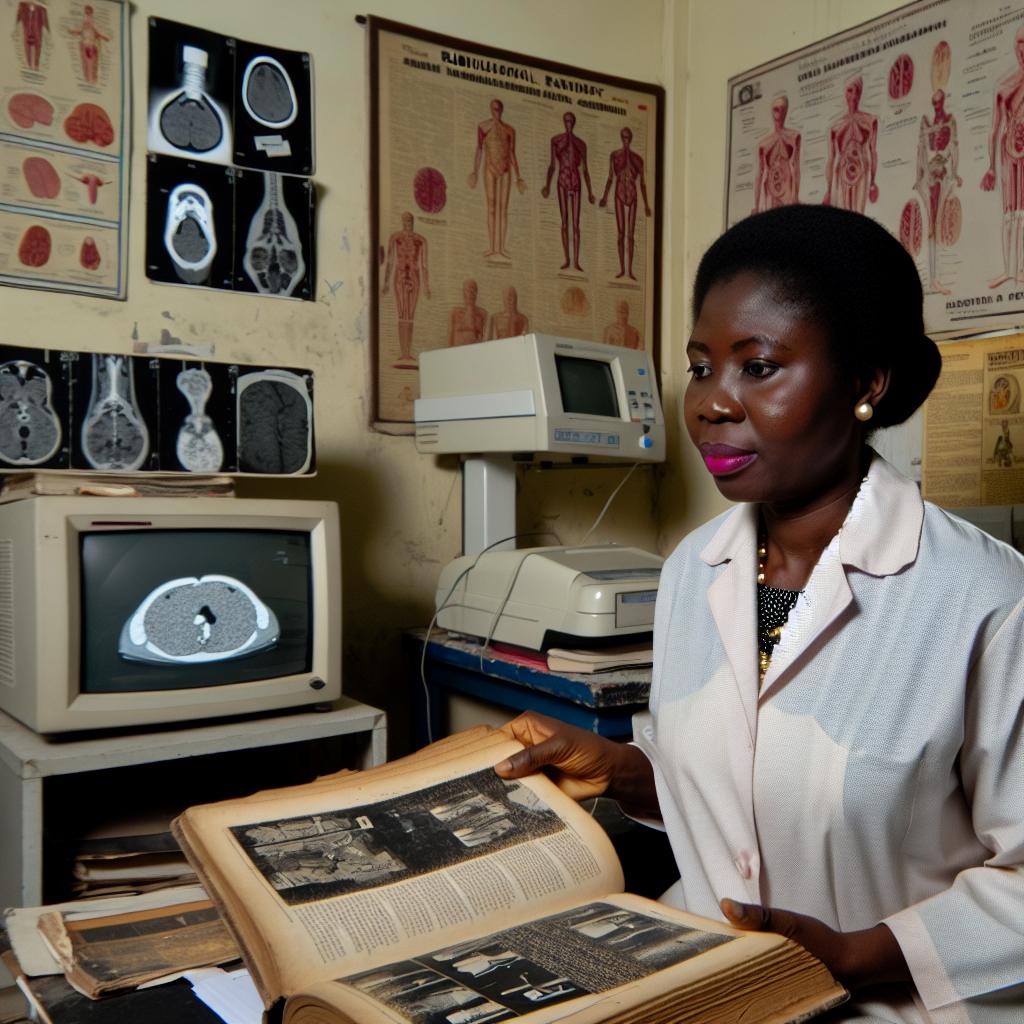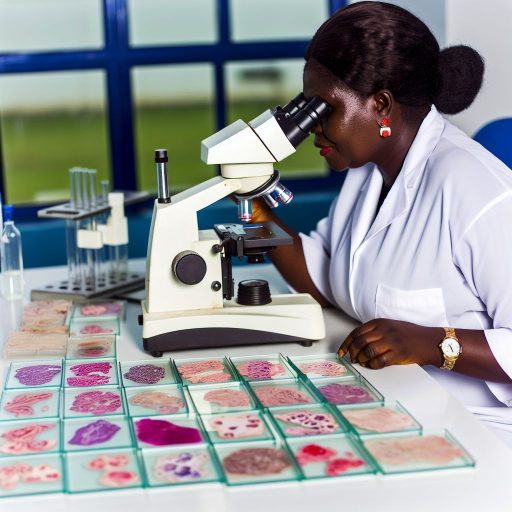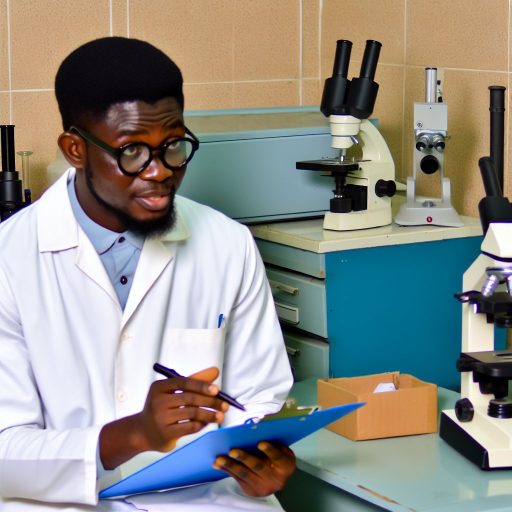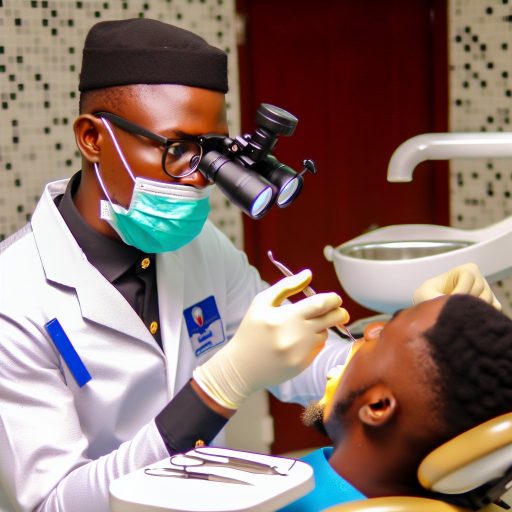Introduction:
Radiological science in Nigeria has a rich history dating back several decades.
Understanding this history is crucial for appreciating the advancements made in the field.
The development of radiological science in Nigeria has played a significant role in the country’s healthcare system.
Nigeria’s first radiological services were established in the early 1930s, primarily for diagnostic purposes.
Over the years, there has been a steady growth in the number of radiological facilities across the country.
These facilities provide essential services to millions of Nigerians.
The history of radiological science in Nigeria is intertwined with technological advancements in the field.
The introduction of digital radiography and other innovative imaging techniques has revolutionized the practice of radiology in the country.
Furthermore, the training and education of radiographers and radiologists have evolved to meet international standards.
This evolution ensures quality healthcare for patients.
By studying the history of radiological science in Nigeria, we gain insight into the challenges and successes that have shaped the field.
This knowledge serves as a foundation for continuous improvement and innovation in the practice of radiology in the country.
The history of radiological science in Nigeria is a testament to the dedication and expertise of healthcare professionals.
These professionals have worked tirelessly to advance the field and improve patient care.
Early Beginnings:
- Introduction of radiology in Nigeria
- Establishment of the first radiological facilities
- Challenges faced in the early years of radiological science
Radiology, the branch of medicine that uses medical imaging to diagnose and treat diseases, was introduced to Nigeria in the early 20th century.
It was a significant milestone in the country’s healthcare system, as it provided a new way to visualize and understand the human body.
Introduction of Radiology in Nigeria:
- The concept of radiology was first introduced to Nigeria through the efforts of British colonial doctors who brought X-ray machines to the country.
- These machines were initially used for basic diagnostics, such as detecting fractures and tuberculosis, but soon expanded to more advanced imaging techniques.
Establishment of the First Radiological Facilities:
- The first radiological facilities in Nigeria were established in major hospitals in urban centers like Lagos, Ibadan, and Kaduna.
- These facilities had X-ray machines, ultrasound equipment, and later, CT scanners and MRI machines, providing a range of diagnostic tools for healthcare providers.
Challenges Faced in the Early Years of Radiological Science:
- One of the major challenges faced in the early years of radiological science in Nigeria was the lack of trained personnel to operate and interpret the imaging equipment.
- There was also a shortage of radiologists and radiographers, leading to delays in diagnoses and treatment for patients.
- Additionally, there were issues with equipment maintenance and access to newer technologies, as the country struggled with limited resources for healthcare infrastructure.
Despite the challenges faced in the initial years, the field has continued to grow and expand. More advanced imaging techniques are now available in healthcare facilities across the country.
The introduction of radiology has improved the quality of healthcare in Nigeria, allowing for earlier and more accurate diagnoses, ultimately leading to better patient outcomes.
Development of Training Programs:
- Evolution of training programs for radiologists and radiographers
- Accreditation of training institutions
- Impact of training programs on the growth of radiological science in Nigeria
Training programs for radiologists and radiographers in Nigeria have evolved significantly over the years.
This evolution mirrors the growth and development of radiological science in the country.
Evolution of Training Programs:
In the early years, training for radiologists and radiographers was limited and often informal.
Professionals largely learned on the job or through short courses.
However, as the demand for skilled radiology personnel increased, formal training programs began to be established.
Medical schools and specialized institutions started offering structured training programs.
These programs provided in-depth knowledge of radiological science, imaging techniques, and patient care.
Hands-on experience and practical skills were emphasized, preparing professionals for the field’s rigors.
Accreditation of Training Institutions:
As training programs expanded, the need for accreditation of training institutions became vital.
Accreditation ensures institutions meet certain standards of education and training.
This provides quality assurance to both students and employers.
In Nigeria, regulatory bodies such as the Radiographers Registration Board of Nigeria (RRBN) play a crucial role.
They set guidelines and criteria for program curricula, facilities, and faculty qualifications.
This ensures that students receive a comprehensive education.
Impact of Training Programs on the Growth of Radiological Science:
The establishment of formal training programs has significantly impacted the growth of radiological science in Nigeria.
Trained radiologists and radiographers bring expertise and professionalism to the field.
This improves the quality of healthcare services in the country.
By providing specialized education and practical training, these programs produced a new generation of professionals.
They are equipped with the latest knowledge and skills.
This has led to advancements in diagnostic imaging, radiation therapy, and other areas.
Moreover, accreditation ensures these programs maintain high standards of education.
This produces graduates who are competent and well-prepared for the field’s demands.
Transform Your Career with Expert Guidance
Get personalized mentorship consulting that’s tailored to your unique path. Our expert advice is actionable and exclusive.
Get StartedAccreditation also enhances the credibility and reputation of training programs.
This attracts more students and encourages continuous improvement in radiological science.
Gain More Insights: Preventive Dentistry: Addressing Bad Breath
Technological Advancements
Over the years, there have been significant technological advancements in radiological science in Nigeria.
These advancements have revolutionized the field and improved patient care and diagnosis.
- Introduction of new radiological imaging techniques: With the rapid advancement in technology, new radiological imaging techniques such as MRI, CT scans, and ultrasound have been introduced in Nigeria. These techniques provide more detailed and accurate images, allowing for better diagnosis and treatment planning.
- Acquisition of modern equipment in radiology centers: Radiology centers across Nigeria have invested in modern equipment to keep up with technological advancements. This includes state-of-the-art MRI machines, CT scanners, and digital X-ray machines, among others. These modern pieces of equipment enable radiologists to obtain high-quality images quickly and efficiently.
- Impact of technology on patient care and diagnosis: The integration of technology in radiological science has greatly improved patient care and diagnosis in Nigeria. The use of advanced imaging techniques allows for early detection of diseases, accurate diagnosis, and precise treatment planning. Patients can now receive timely and effective care, leading to better outcomes.
Moreover, the digitization of radiological images and reports has streamlined the workflow in radiology centers.
This has reduced the risk of errors and improved efficiency. Patients no longer have to wait long hours for their results, as digital images can be easily accessed and shared among healthcare providers.
Furthermore, technological advancements in radiological science have enhanced collaboration among healthcare professionals.
Radiologists can now easily consult with other specialists, share images and reports, and make collective decisions for the best patient care.
The technological advancements in radiological science in Nigeria have transformed the field, leading to better patient care, accurate diagnosis, and improved outcomes.
As technology continues to evolve, radiology centers in Nigeria must continue to invest in modern equipment and stay abreast of the latest advancements.
This investment is crucial to provide the best possible care to patients.
See Related Content: Eye Care for Children: What Nigerian Parents Should Know
Role of Radiological Science in Healthcare:
Radiological science plays a crucial role in healthcare by aiding in the diagnosis and treatment of various diseases.
Through the use of imaging techniques such as X-rays, CT scans, MRIs, and ultrasounds, healthcare providers can visualize the internal structures of the body and identify abnormalities that may be indicative of a medical condition.
This allows for early detection and intervention, leading to better patient outcomes.
Furthermore, radiological science often collaborates with other medical specialties to provide comprehensive care to patients.
For example, radiologists work closely with oncologists to monitor the progression of cancer through imaging studies and evaluate the effectiveness of treatment protocols.
Additionally, interventional radiologists perform minimally invasive procedures to treat a wide range of conditions, including vascular diseases, liver tumors, and kidney stones.
Despite its importance, there are challenges faced in integrating radiological science into the healthcare system.
One major challenge is the high cost associated with acquiring and maintaining imaging equipment, which can limit access to these services for certain populations.
In addition, there is a shortage of trained radiologists in many regions, resulting in delays in diagnosis and treatment.
Another challenge is the need for ongoing education and training for healthcare providers to ensure that they are utilizing imaging technology effectively and interpreting results accurately.
Additionally, there is a growing concern about the potential risks associated with radiation exposure from certain imaging modalities, prompting the development of protocols to minimize patient exposure while maintaining diagnostic accuracy.
Radiological science plays a vital role in healthcare by providing valuable diagnostic information and supporting a wide range of medical specialties.
While there are challenges to overcome, continued advancements in technology and training will help to further integrate radiological science into the healthcare system and improve patient care.
- Importance of radiological science in diagnosing and treating diseases.
- Collaboration with other medical specialties.
- Challenges faced in integrating radiological science into healthcare system.
See Related Content: The Future of Restorative Dentistry in Nigeria

Regulatory Framework
Regulatory framework plays a crucial role in ensuring the safe practice of radiological science in Nigeria.
The establishment of regulatory bodies is essential to oversee and monitor the activities of radiological practitioners.
In Nigeria, the regulatory body responsible for regulating radiological practice is the Radiographers Registration Board of Nigeria (RRBN).
The RRBN was established to ensure that radiographers adhere to professional standards and guidelines.
The RRBN works in collaboration with other regulatory bodies such as the Nigerian Nuclear Regulatory Authority (NNRA).
They enforce regulations and guidelines set by international organizations like the International Atomic Energy Agency (IAEA) and the World Health Organization (WHO).
Compliance with international standards and guidelines is imperative to guarantee the safety of both patients and radiological personnel.
These standards cover aspects such as radiation protection, quality assurance, and ethical considerations in radiological practice.
The enforcement of regulations in radiological practice is essential to prevent malpractice.
This ensures the delivery of high-quality radiological services.
Radiographers are required to undergo continuous training and education to stay updated with the latest developments in the field.
Regulatory bodies conduct regular inspections and audits of radiological facilities.
These assessments aim to check compliance with regulations.
Non-compliance can result in sanctions or revocation of practice licenses, emphasizing the importance of adherence to regulatory frameworks.
The regulatory framework for radiological science in Nigeria is designed to protect the public.
It ensures the delivery of safe and effective radiological services.
Compliance with regulations and international standards is vital for maintaining the integrity and professionalism of the radiological profession.
- Establishment of regulatory bodies for radiological science in Nigeria
- Compliance with international standards and guidelines
- Enforcement of regulations in radiological practice
Uncover the Details: Impact of Climate on Parasitic Diseases in Nigeria
Research and Innovation:
Over the years, Nigerian radiologists have made significant contributions to research in radiological science.
They have played a crucial role in advancing the field through their dedication to exploring new techniques and technologies.
Contribution of Nigerian radiologists to research in radiological science:
- Nigerian radiologists have been actively involved in conducting research studies to improve diagnostic imaging methods.
- They have published numerous research papers in renowned medical journals, showcasing their findings and contributing to the global body of knowledge in radiology.
- Through collaborative efforts with other healthcare professionals, Nigerian radiologists have worked on interdisciplinary research projects that have led to groundbreaking discoveries.
- Their research has focused on addressing specific healthcare challenges in Nigeria, such as early detection of diseases and improving patient outcomes through innovative imaging techniques.
Innovation in radiological imaging techniques:
- Nigerian radiologists have been at the forefront of adopting cutting-edge imaging technologies to enhance the quality and efficiency of diagnostic procedures.
- They have introduced innovative imaging techniques such as 3D mammography, MRI-guided biopsies, and PET scans to improve accuracy in diagnosis and treatment planning.
- By incorporating artificial intelligence and machine learning algorithms into radiological imaging, Nigerian radiologists have been able to streamline the interpretation process and achieve higher levels of diagnostic accuracy.
- Furthermore, they have been actively involved in training programs and workshops to educate other healthcare professionals on the latest advancements in radiological imaging techniques.
Collaboration with international partners for research projects:
- Nigerian radiologists have established collaborations with renowned international institutions and researchers to exchange knowledge and expertise in radiological science.
- Through joint research projects, they have been able to access state-of-the-art equipment and resources that have accelerated their research efforts and facilitated groundbreaking discoveries.
- International partnerships have also enabled Nigerian radiologists to participate in multicenter studies and clinical trials, expanding their research impact on a global scale.
- These collaborations have not only enhanced the research capabilities of Nigerian radiologists but have also promoted cross-cultural exchange and mutual learning among scientists from different backgrounds.
The research and innovation efforts of Nigerian radiologists have significantly contributed to the advancement of radiological science in the country.
Their dedication to conducting research, adopting innovative imaging techniques, and collaborating with international partners has positioned Nigeria as a key player in the global radiology community.
Progress in Radiological Science in Nigeria
The history of radiological science in Nigeria has shown significant progress and development over the years.
From the early establishment of radiology departments to the implementation of modern technologies, the field has made great strides.
It is crucial to preserve and document the history of radiological science in Nigeria to honor the pioneers who have contributed to its growth.
By understanding the past, we can appreciate the journey that has brought us to where we are today.
Looking ahead, the future of radiological science in Nigeria holds promise as advancements in technology continue to transform the field.
With increasing access to education and training, the next generation of radiologists and radiographers are poised to make even greater contributions to healthcare in the country.
Additional Resources
AACR Travel Awards Bring African Researchers to Annual Meeting




